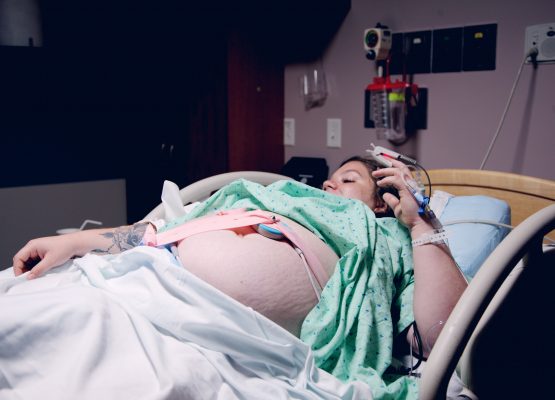
Skin-to-skin contact, also known as Kangaroo Care, immediately after childbirth or less than 10 minutes after birth, or soon afterwards, is strongly promoted as one of the factors that promotes breastfeeding and mother-child bonding. The World Health Organization (WHO) recommends the practice of SSC for at least one hour after birth, and health care providers should encourage women to recognise when their babies are ready to breastfeed and offer help if needed. Espesially benefit both term and preterm infants in short-term outcomes, such as breastfeeding establishment and blood sugar levels. in preterm, very low birth weight infants, STS appears to improve neurodevelopmental outcomes. In the case of skin-to-skin contact, the newborn is placed on the mother’s bare chest in the prone position immediately after birth and is put in as long as the mother and child are in the delivery room.

Benefits
The benefits of that method are not only about the mother but also for the baby.
- The infant adapts more easily. Mother transmits heat to her baby’s skin, especially to the womb, so that the infant adapts more easily to her new environment after birth. Babies born between 34-37 weeks of age and having skin-to-skin contact immediately after their birth were 2.88 times more likely to balance their respiratory and cardiac system.
- It increases the baby’s mental development. Benefits are long-term especially for preterm babies who took care of the kangaroo method had better brain function. This intervention can also lead to undesirable physiological effects in baby such as; stress initiation, increased crying in the newborn and consequently. The way the baby connects with you also affects the way his brain is organized, stimulating his emotional development.
- Enhances healthy weight. Contact with the skin significantly increases the body weight of the newborn. “When the infant is warm, it does not need to use its energy to adjust its body temperature so it can use this energy to grow.”
- Makes breastfeeding easier. “Newborns have an increased sense of smell, so putting your baby on your skin helps you to look for the nipple and start breastfeeding.” Most common is at the critical period (the first two hours after birth) to put the baby to mothers chest just only to stabilized breastfeeding. They can even start breast-feeding by themselves so it seems that utilizing infant innate behaviors for initiating breastfeeding is a rationale venture to start interventions aimed at increasing the successful breastfeeding and maximum advantages of this period for that can be achieved by applying skin-to-skin care (SSC) method.
- It helps the mother to have more milk. When mother and baby are together, the hormones that regulate the balance of lactation are activated. The first hour after birth the SSC give rise to hormonal responses in the mother, accordingly increased oxytocin secretion to produce milk and prolactin hormone reflex for milk production.
- This reduces the stress and pain of the baby. Just 10 minutes of skin-to-skin contact, they reduce cortisol levels in the infant and increase the levels of oxytocin, which stimulates the parasympathetic nervous system and makes the baby feel calm and safe. It is not surprising that the skin contact calms the baby and even helps to regulate the heart rate and body temperature.
- Helps the child’s sleep. Less stress and stress help the child to sleep more easily and for longer. They breathe more easily and rhythmically. This is because they are in such a position that they can hear the mother’s heart a familiar sound that was sleeping and when they were in her belly. In cases where the kangaroo method was used in premature babies, the result was to sleep more slowly and wake up less often than when they sleep in the incubator during the first hours of their life.

The skin with skin contact evolves into the hug that we all need. Take your baby a hug and you’ll see how much easier it will calm down and smile again.
Ethologists believe that an early hour after birth are the ideal time tostart infant’s nutritional behaviors, such as searching and sucking, and is a sensitive and critical period for breast-feeding that most infants respond to the touching, warmth, and olfaction stimulation. Therefore, the separation of mother and infant immediately after birth can lead to discontinuation of these innate behaviors.




